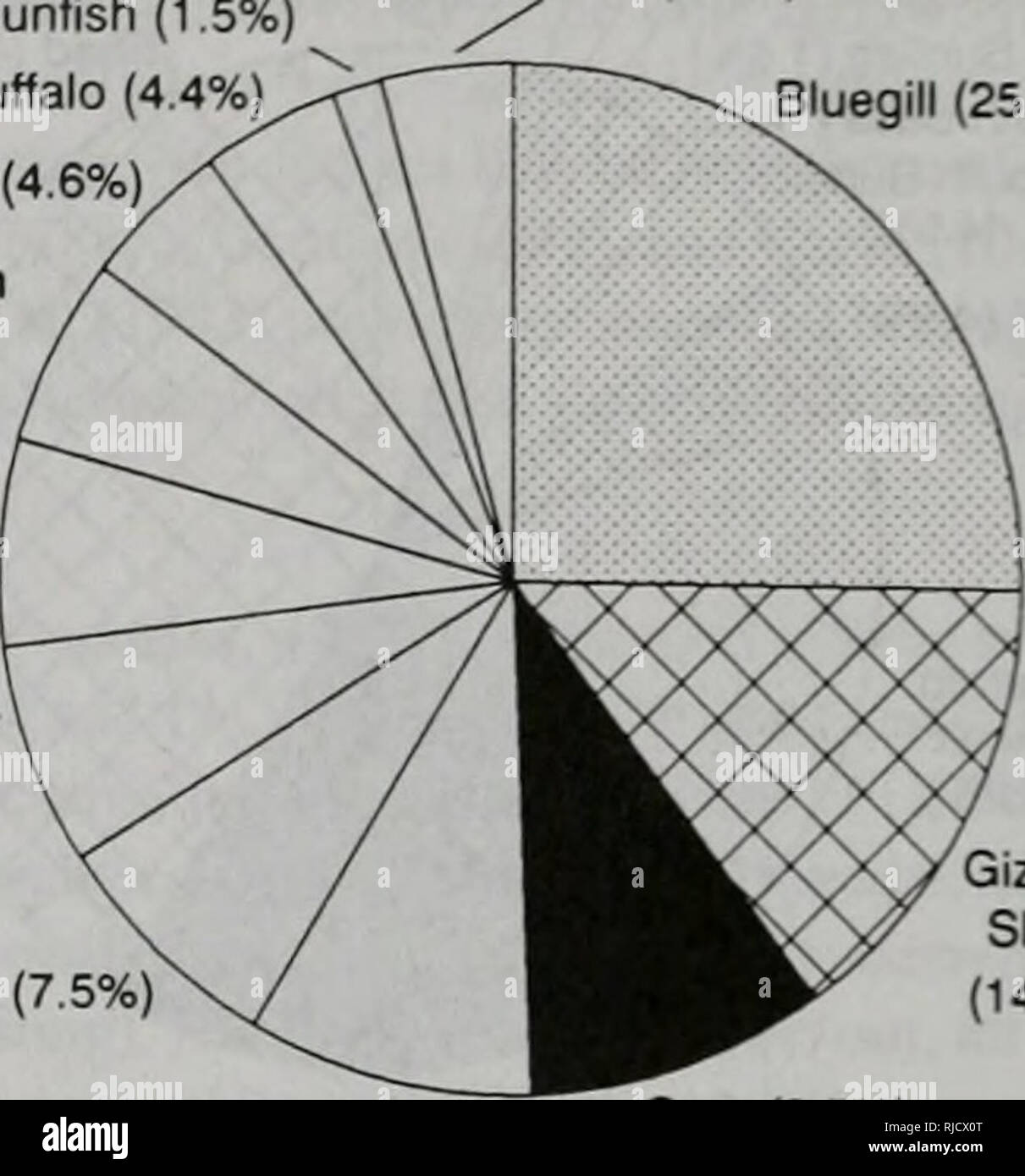. The changing Illinois environment : critical trends : technical report of the Critical Trends Assessment Project. Man; Pollution; Environmental protection; Ecology; Environmental impact analysis. Green Sunfish (1.5%) Smallmouth Buffalo (4.4%) Freshwater Drum (4.6%) Bigmouth Buffalo (5.9%) Black Crappie (6.4%) Emerald Shiner (7.0%) Other (4.1%) Bluegill (25.3%) Channel Catfish (7.5%). Gizzard Shad (14.7%) Gizzard Shad (32.2%) Largemouth Bass (9.0%) Carp (9.5%) Figure 37. Percentages of catches by species for the lower Illinois Waterway, for 1963 and 1992, based on number of individuals collec

Image details
Contributor:
Library Book Collection / Alamy Stock PhotoImage ID:
RJCX0TFile size:
7.2 MB (215.3 KB Compressed download)Releases:
Model - no | Property - noDo I need a release?Dimensions:
1526 x 1638 px | 25.8 x 27.7 cm | 10.2 x 10.9 inches | 150dpiMore information:
This image is a public domain image, which means either that copyright has expired in the image or the copyright holder has waived their copyright. Alamy charges you a fee for access to the high resolution copy of the image.
This image could have imperfections as it’s either historical or reportage.
. The changing Illinois environment : critical trends : technical report of the Critical Trends Assessment Project. Man; Pollution; Environmental protection; Ecology; Environmental impact analysis. Green Sunfish (1.5%) Smallmouth Buffalo (4.4%) Freshwater Drum (4.6%) Bigmouth Buffalo (5.9%) Black Crappie (6.4%) Emerald Shiner (7.0%) Other (4.1%) Bluegill (25.3%) Channel Catfish (7.5%). Gizzard Shad (14.7%) Gizzard Shad (32.2%) Largemouth Bass (9.0%) Carp (9.5%) Figure 37. Percentages of catches by species for the lower Illinois Waterway, for 1963 and 1992, based on number of individuals collected per hour of electrofishing. In 1963, 11 species accounted for 95.5% of all fish collected per hour, with two-thirds of the catch being dominated by gizzard shad and the non-native carp (the most abundant fish). In 1992, 11 species accounted for 95.9% of all fish collected per hour; however, bluegill was the most abundant species. As in the middle waterway, percentages for each species in 1992 were more evenly distributed than in 1963, indicating no single species overwhelmingly dominated catches. Species are arranged in descending order of relative abundance in a clockwise direction and are labeled separately until approximately 95.5% of the pie is filled. Illinois has a long history regarding the study of freshwater mussels. Thomas Say, one of America's first scientists and known as "the Father of Conchol- ogy" (the study of shells), first studied the mussels of the region in the early 1800s. Other scientists have conducted surveys and documented drastic declines in the freshwater mussel fauna over the past 175 years (Baker 1928, Parmalee 1967, Starrett 1971, Suloway et al. 1981). Because of the diligence of earlier workers, we have excellent data on the known historical fauna of many of the streams of Illinois. We have information on the distribution and abundance of mussels from the 1950s and 1980s for four rivers in Illinois: the Embarras, Little Wabash, Sanga